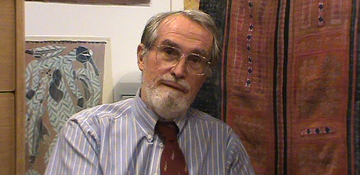
(6-14-16) I was in Chicago last week to attend a housing summit hosted by the Corporation for Supportive Housing, a cutting-edge leader in developing housing for persons who are homeless, have mental illnesses and addictions, and those leaving prisons. Much of the talk was about “metrics” — being able to show results with verifiable numbers. If you can’t show that what you are doing is actually producing results, government agencies and philanthropic organizations are reluctant to support you. That being the case, I was surprised yesterday when Dr. E. Fuller Torrey sent me a copy of his latest jab at the Substance Abuse and Mental Health Services Administration (SAMHSA), which he has frequently targeted. According to the article, the federal agency that is supposed to be helping individuals with mental illnesses keeps no metrics about schizophrenia. How can that be?
Washington Funds Ignorance of Mental Illness
By E. Fuller Torrey, published June 13, 2016 in The National Review
The federal government collects accurate data on the number of pigs in Iowa, on milk cows in New York, and on turkeys in Delaware but none whatsoever on the number of people with schizophrenia. The Centers for Disease Control and Prevention keeps a long list of diseases that must be reported, including cryptosporidiosis, chlamydia, and cancer, but not schizophrenia.
This is remarkable, since schizophrenia is among our most consequential and expensive diseases. In a 2013 study, the annual economic burden of schizophrenia was estimated to be $156 billion. Three studies have reported that individuals with schizophrenia are responsible for 10 percent of all homicides in the United States; other studies suggest that people with schizophrenia — such as Jared Loughner in Tuscon, Aaron Alexis at the Washington Navy Yard, and James Holmes in Aurora, Colo. — are also responsible for up to one-third of mass killings. Even Adam Lanza in Newtown, Conn., had had a diagnosis of schizophrenia, in addition to autism spectrum disorder.
Other developed nations believe that it is important to ascertain the prevalence of schizophrenia and whether it is increasing or decreasing. For example, recent European studies have reported that schizophrenia is twice as common in England and the Netherlands as in Italy or Spain, that it has been steadily increasing in south London over three decades, and that early-onset schizophrenia is increasing in Denmark.
And what do we know about the United States? Nothing.
Could an increasing incidence of schizophrenia be partly responsible for the sharp increase in the number of homeless who are mentally ill? We have no idea. Or the increase in mentally ill persons in jails and prisons? Or the startling increase in the number of mentally ill individuals who now receive psychiatric disability benefits, and are therefore eligible for Medicaid, under the Social Security Disability Insurance (SSDI) and Supplemental Security Income (SSI) programs? We know nothing. Our last prevalence study of schizophrenia was in 1980–84, when four cities and one rural area were studied and, from the results, a national prevalence was estimated. The last complete enumeration of “insane” persons in the United States was in the 1880 census.
Why are we failing to collect essential data on such a significant disease?
In 1992 the Substance Abuse and Mental Health Services Administration (SAMHSA) was created under the Department of Health and Human Services. SAMHSA’s mission is to use its $3.5 billion budget to reduce the burden of mental illness and substance abuse and to target services to “people most in need.”
Congress mandated SAMHSA to collect data on the rates of serious mental illness in each state to be sure that its funds go where they are most needed.
But SAMSHA has never carried out any assessments of schizophrenia or bipolar disorder, the two conditions affecting the vast majority of individuals with serious mental illness. Instead, it conducts an annual survey that asks such questions, as “How often did you feel nervous in the last 30 days?” And to make sure it does not include most people with schizophrenia or bipolar disorder, the survey does not include people who are homeless, incarcerated, or in mental institutions. And so as an assessment of serious mental illness, SAMHSA’s survey is useless.
Why hasn’t SAMHSA ever ascertained the prevalence of schizophrenia or bipolar disorder? Incredibly, because the agency does not believe that these diseases exist. Neither disease is mentioned anywhere in the 41,804 words in SAMHSA’s four-year plan of 2011–14. Representative Tim Murphy (R., Pa.), the chairman of the House Subcommittee on Oversight and Investigation, held hearings on SAMHSA and concluded, “It’s as if SAMHSA doesn’t believe that serious mental illness exists.”
This was confirmed two months ago by Elinore Mccance-Katz, who in 2015 resigned in disgust as SAMHSA’s last psychiatrist employee. There is “a questioning by some at SAMHSA as to whether mental disorders even exist — for example, is psychosis just a ‘different way of thinking for some experiencing stress?’” she wrote. SAMHSA’s beliefs are probably best reflected by Daniel Fisher, a psychiatrist who receives a $330,000 grant from SAMHSA each year and is often used to publicly represent the agency. Fisher says that schizophrenia is really just a form of “severe emotional distress” and even “a spiritual experience.”
Asking an agency to measure something that the agency doesn’t believe exists is right out of Alice in Wonderland. In this case, much of the agency’s $3.5 billion budget disappears down the rabbit hole with the rabbit.
— E. Fuller Torrey, M.D., is the founder of the Treatment Advocacy Center and author of American Psychosis: How the Federal Government Destroyed the Mental Illness Treatment System.



